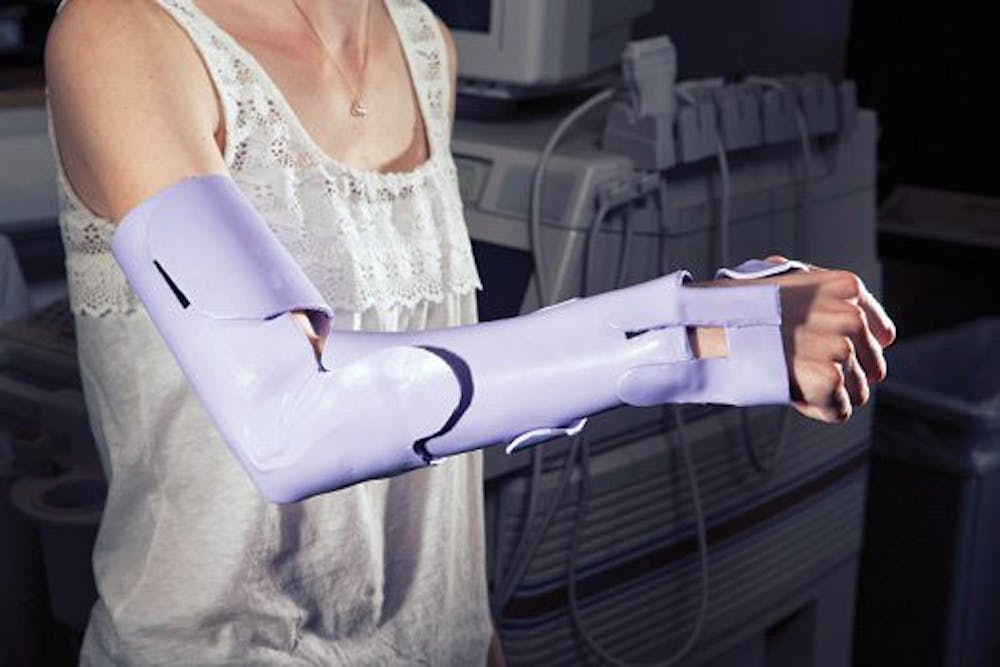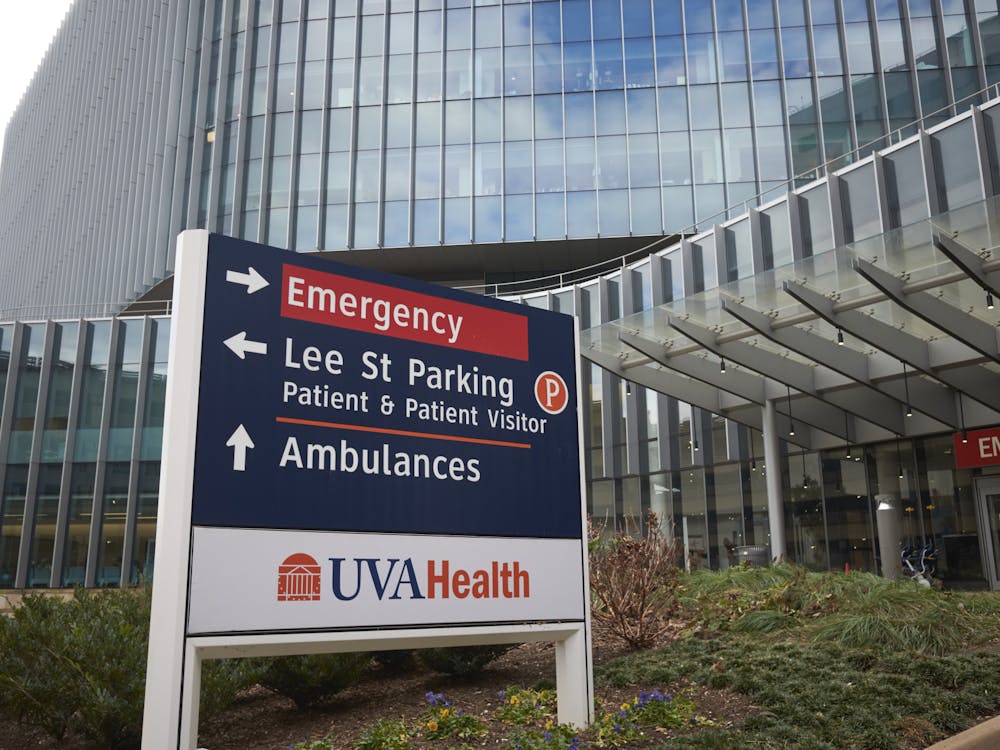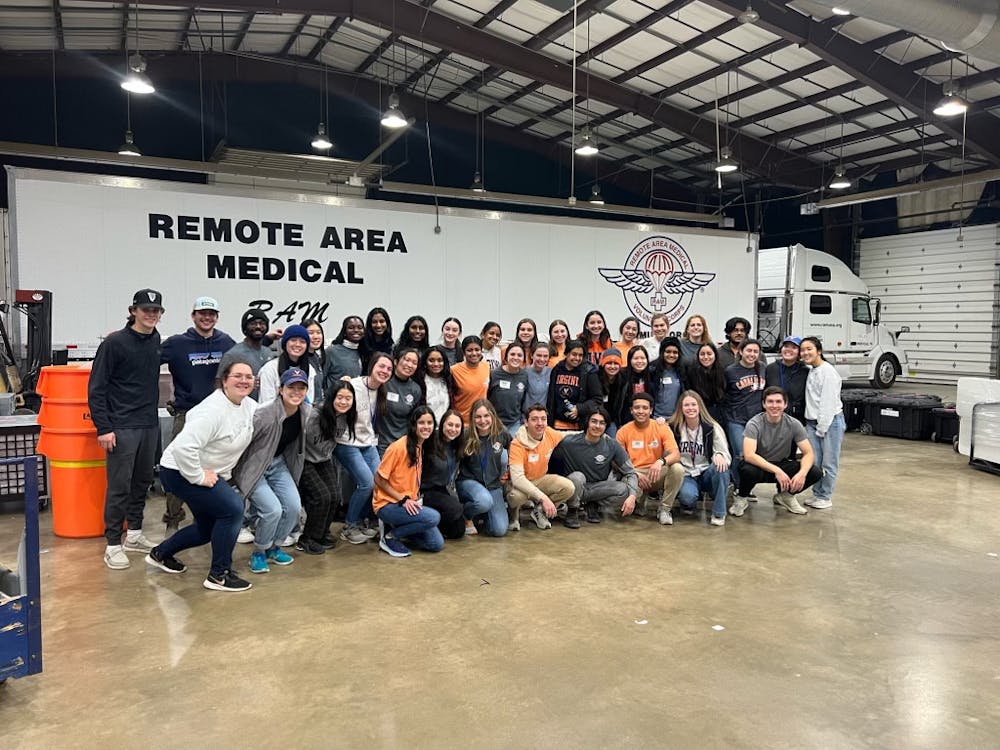With football, soccer, and several other collegiate sporting seasons at full swing, thousands of Virginians are hedging on the well-being of our student-athletes. Wishing for injury-free seasons, however, is perhaps not the best solution to the debilitating injuries that impair athletes and laymen alike.
Drawing from personal experience, the four University student inventors of the PuzzleCast realized this, and put their inspiration to work in crafting a six-piece cast that prevents muscle atrophy while supporting a broken arm.
The now-graduated students — Daniel Amante, Amanda Harton, Kelly Anderson and Clara Tran — were recognized with an Invention Award and a $10,000 grant from the National Collegiate Inventors and Innovators Alliance last year.
Both Harton’s and Amante’s inspiration came from their experiences with high school athletics, seeing fellow teammates suffer and suffering themselves from muscle atrophy and slow recovery in traditional casts, according to a University press release. Tran saw problems with muscle recovery in her work with elderly patients.
“The inspiration we needed to solve the problem had been all around us throughout our high school careers,” Amante said in the statement.
Even after the former University students’ cast has been set, the doctor can remove one of the pieces of the cast by detaching the simple rivets that bind the pieces together. With each removal, a new portion of the recovering limb is able to exercise, which allows muscle tissue revival at an unprecedented rate.
What was originally broached as a joke in passing during a brainstorming session of their biomedical engineering capstone course has developed into a widely-applicable medical innovation, on its way to hitting the market after further testing.
PuzzleCast’s development involved long hours of research, as well as a healthy dose of self-testing. The students first wrapped sections of clay around their own arms to understand how pieces of the cast would need to be shaped and arranged in order to function effectively. They then progressed to plastic prototypes, and Harton tested the invention on her own arm. She was first fitted with a regular cast and later with a PuzzleCast prototype, so that they could understand the functional differences and benefits of their model, according to online publication In the Capital.
All four student inventors graduated from the Engineering School in May, but their work didn’t end there — ideas and prototypes are brewing to extend functional models of the PuzzleCast to other parts of the body.
“We have definitely learned much about the patent landscape in the United States,” Amante said in the statement. “We’ve made our fair share of mistakes along the way, but we’ve learned too.”





